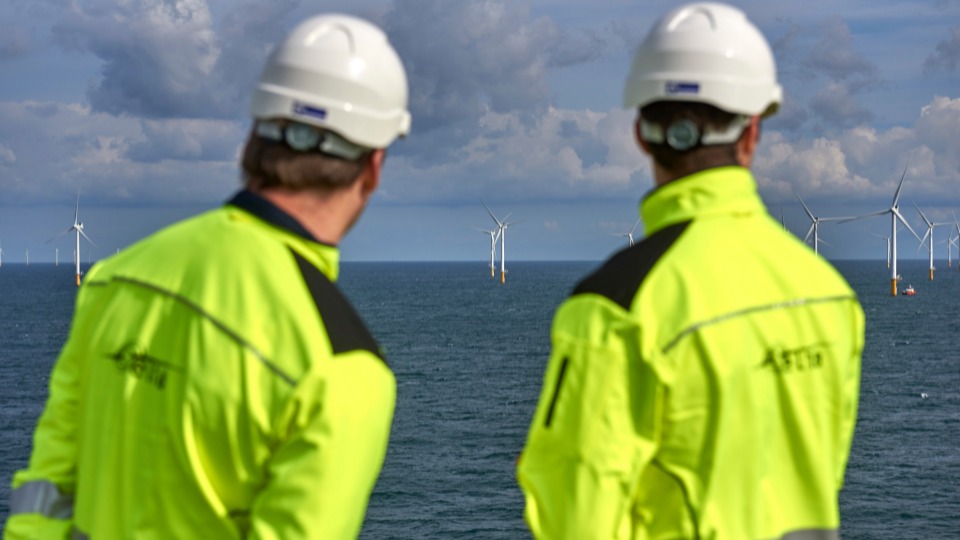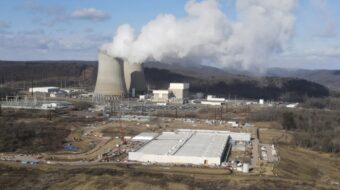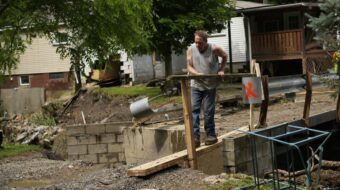
If the coastal wind farm network proposed by the Biden administration on Wednesday comes to fruition, some 77,000 green jobs will be created and 78 million tons of carbon dioxide emissions avoided. That according to estimates by the government.
A plan rolled out by Secretary of the Interior Deb Haaland would see the construction of seven major offshore wind farms along the West and East Coasts and the Gulf of Mexico. Speaking at a wind power conference, Haaland called the project “an ambitious road map” toward a clean energy economy.
It is part of a Biden goal of developing the capacity to generate 30 gigawatts of offshore wind energy by 2030—enough to power 10 million homes. Five years later, by 2035, the hope is to reach 100% carbon pollution-free electricity for the United States.
Haaland said the government is determined to “confront climate change, create good-paying jobs, and accelerate the nation’s transition” to a post-carbon power system. Offshore wind will be a major contribution toward achieving it.

Along with the climate change initiatives and funding wrapped up in the Build Back Better Act now being negotiated in Congress, the wind farms symbolize a major shift toward reversing and containing the damage done by decades of ecological neglect by the world’s corporations and governments.
The Build Back Better Act is currently being held hostage by corporate Democrats, such as Sens. Joe Manchin and Kyrsten Sinema, however, who are balking at government investment in public needs. The wind farms, by contrast, would be largely built with private money.
Wind turbines will be constructed in publicly-owned waters leased to clean energy companies along the Carolinas, New York, Maine, the states that ring the Gulf of Mexico, and California. Only U.S. waters in the Arctic are excluded from the plan. The rights to develop the power generating operations are to be auctioned off between now and 2025.
A number of the nine potential deals currently under review by the Interior Department’s Bureau of Ocean Energy Management (BOEM) have been proposed earlier, and two small wind farms already operate off the East Coast. Haaland’s speech, however, signaled the Biden administration’s intention to throw more weight behind the water-leasing scheme as part of an attempt to catch up with other countries already more advanced in wind-powered electricity generation.
China accounts for 38% of the world’s wind power, and the European Union 28%. The U.S., by contrast, only generates 16%. Almost all of the 69,000 wind turbines currently operating in America are located onshore in rural areas, and they produce less than a tenth of the electricity generated in the country.
Construction of the first commercial-scale private wind farm—the $2.8 billion Vineyard Wind project off the Massachusetts coast—was approved by the Biden administration in May this year and is expected to set the pattern for projects that follow.
Haaland called Vineyard’s approval a step toward creating “good paying union jobs while combating climate change.” BOEM has in the past required leaseholders of such projects to enter into project labor agreements (PLAs) that require prevailing union pay and benefit levels for all workers involved, even if they are not covered by a collective bargaining agreement.
Similarly, the Interior Department said it will soon draft requirements for the next round of wind farm construction, including the encouragement to use union labor and U.S.-made materials. At the time of Vineyard’s approval, Frank Callahan, president of the Massachusetts Building Trades Council, said that it’s “important…that these will be good union jobs with good wages and benefits.”
Vineyard was nearly two decades in the making, delayed by well-funded opposition from waterfront property owners and attempts by former President Donald Trump to kill it off. Trump dismissed wind turbines as “ugly, noisy, and dangerous” symbols of “wrong-headed environmentalism.” His government opted to continue propping up the oil and gas industries, which have historically been major contributors to Republican Party election campaigns.

It’s not just Republicans and big oil and gas that oppose or question offshore wind farms, however. Commercial fishing companies complain that turbines interfere with their ability to catch scallops and lobsters.
Less concerned with profits, conservationists worry that large offshore wind farms could kill thousands of birds. Haaland’s office said it engage with such groups prior to identifying the exact locations for the new facilities. The Energy Department also announced it will conduct a study to determine the risks that offshore wind turbines pose to birds, bats, marine mammals, and fish.
Some labor economists, meanwhile, are skeptical of the jobs claims being made by the Biden administration, mostly because the production and supply chains for turbine construction are already heavily concentrated in China and Europe—not the U.S.
The Biden wind farm plan is important for reasons that go beyond domestic politics and stakeholder negotiation, however.
In August, the United Nations Intergovernmental Panel on Climate Change declared that it is already too late to reverse the massive damage humanity has done to the Earth’s climate. The agency’s report said only immediate action to stop emissions has any hope of slowing the world’s march toward climate catastrophe. UN Secretary-General António Guterres said that the “death knell” must sound for “coal and fossil fuels before they destroy our planet.”
Biden’s ambition to dot the U.S. coastline with turbines and reach 100% emissions-free electricity generation by the middle of the next decade represents the beginning of a response to Gutterres’s call.
With the COP26 UN climate summit set to open in Glasgow in November, the wind farm plan also ensures that the Biden administration will at least have something to show up with when the president meets with world leaders. The other major pieces of his climate change agenda—such as the creation of a Civilian Climate Corps, energy efficiency building retrofit credits, electric vehicle infrastructure investments, and more—are in limbo along with the entire 10-year, $350 billion-per-year reconciliation bill.
The wind farms are an important supplement to the Build Back Better Act’s climate and green jobs measures, but they are no replacement. That’s why environmental and labor activists are continuing to press for its passage, even as they praise the emissions reductions and potential job creation that will result from the offshore turbine revolution.
RELATED STORIES:
> Connecticut’s offshore wind energy revolution builds movement for Green New Deal
> Already too late: IPCC report says global warming consequences now unavoidable
> Save Build Back Better Act from corporate Democrats holding it hostage
> Biden’s climate measures must pass or he’ll go empty handed to COP26










